Since becoming a graphic designer I have participated in only three workshops. When I was in college I attended a semi-conference in a picturesque town near Mexico City where I can honestly not remember what it was about. It was that memorable. A few years later and not so long ago I participated in two pre-conference workshops at TypeCon in Minneapolis. I selected the two workshops that would take me the farthest from my comfort zone: Lettering with Ken Barber of House Industries and calligraphy with Michael Clark. I wanted to see if I could break away from the computer and be able to create typography with my own, clumsy hands. I couldn’t. And from seeing what others could do, I realized I should stick to choosing fonts and drawing New School Bezier style. (And to pay Michael Clark money to do the Speak Up logo I was planning on doing myself after his workshop was over and I felt somewhat empowered).
Workshops present an opportunity to do something out of the ordinary, to acquire a new skill, to satisfy a curiosity, or even to discover a hidden passion. Their limited time commitment and convenient plastic bubble set-up allow you to take risks in an environment with little repercussions on your day-to-day life and work, allowing you to lose any (or some) inhibitions you might have. I have heard of people that have been transformed by a workshop whether by extending their understanding of their current abilities or by the realization that they are passionate about something else completely. In our industry, Milton Glaser’s SVA Summer workshop is legendary (not to mention secretive: the first rule of the Milton Glaser Summer Program is that you don’t talk about the Milton Glaser Summer Program); DesignInquiry, now in its fourth year, is shaping out be a workshop powerhouse; firms like tomato and UnderWare run highly acclaimed and popularly attended workshops as they see fit; and most design conferences offer the rare opportunity to learn directly and hands on from the famed speakers on the roster. Also, when a celebrated design personality travels far, the receiving institution is eager to make the most of it by hosting a lecture and a workshop. Like this Spring’s visit of Art Chantry to Portugal’s Escola Superior de Artes e Design (ESAD).
ESAD’s lecture series, Personal Views, has been attracting some of the most influential designers to their school for the last four years, providing a real treat for their students who would otherwise need to travel far and spend plenty of cash. And no treat has lasted longer than Art’s, when ESAD celebrated Art Chantry Week (March 19 – 23), organized by one of their teachers, Emanuel Barbosa, by hosting a lecture — with attendance from people throughout the country, including record collectors from Spain — plus an exhibit of his work and a three-day workshop. Which is the excuse for this post. Emanuel was kind enough to share some photographs of the workshop and thoughts from some of the participating students, who had the arduous task of designing the poster for the play, The Death of a Salesman, in true Art style: No computers, just photocopies, glue, tape and their hands. Seeing the photographs of the students in action was a reminder, for me, of why we do graphic design: For the process of craft and discovery. Which is sometimes easy to forget in the hectic life of being a professional graphic design bound by deadlines and conference calls. You know… it might just be the right time for my fourth workshop.

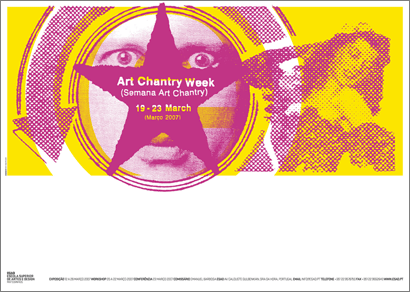
Poster design by Art Chantry and Emanuel Barbosa. [Click image for bigger view]

We always learn from workshops or conferences even if we don’t like the guy or his work. In this case, I can say that I love his work and as in everything else I’ve absorbed some of his perspective into my work since, and rejected some other that I had already achieved or didn’t want to achieve.
Teresa Ribeiro

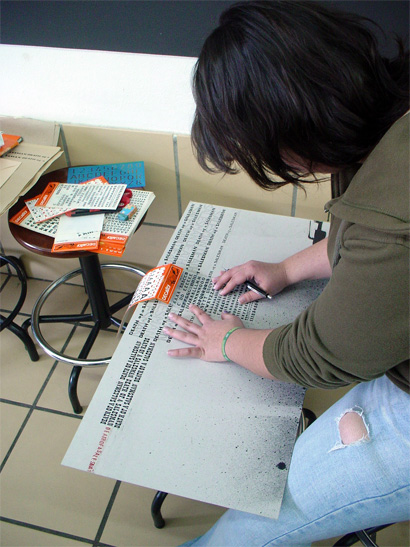
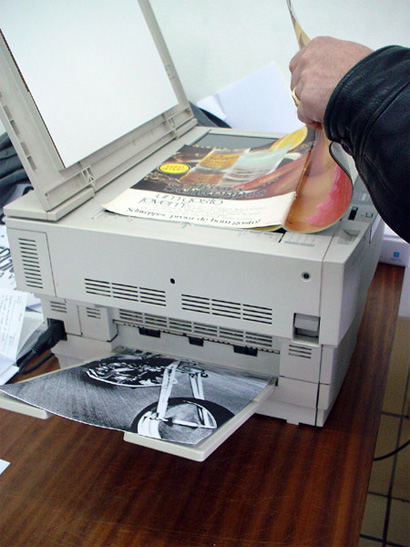
I usually use the computer to do most of my work. It’s rare when I use a manual method. So this workshop really came in a good time. It was a great opportunity to explore the manual method, and to learn other methods without using technology.
Cristina Bessa
It caught my attention and really made me re-think my work process. Mainly because working with a non-digital technique is, unfortunately, an underrated way of doing graphic design these days. Art Chantry in both workshop and conference tried to make his point by telling people that you could do good design using merely your own hands.
Miguel Praça
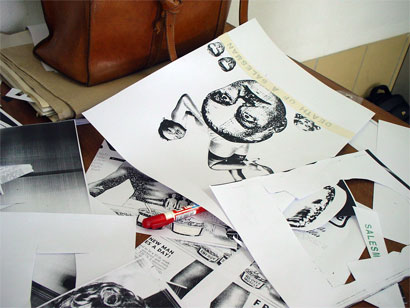
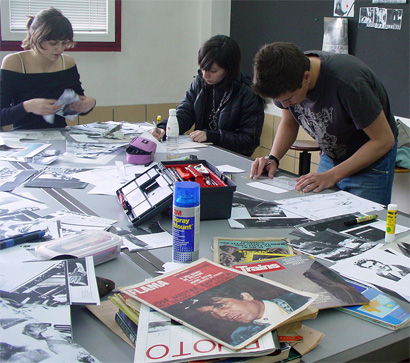

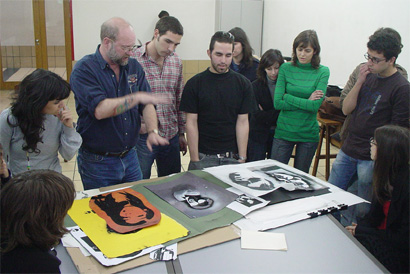
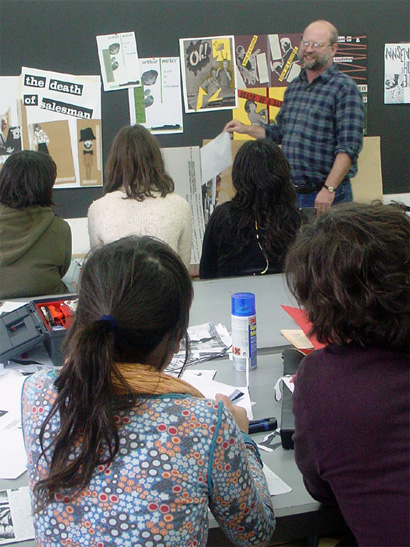

Not that I’m going to change my perspective and want to be ruled by his method, but he’s an excellent storyteller, and I love his humor, specially the ironic way he uses to tell his stories, so I may say that I’ve learned a lot about calming myself and how it’s much more creative and productive being relaxed or sometimes humoristic while I’m working and to be more and more interested in questions that come to my mind, even though sometimes they’re stupid or unexpected.
Teresa Ribeiro
We all look at each other’s work with different perspectives and different mentalities. We are always looking for a new pair of eyes, and the vision of Art Chantry, that we can do good work or even better without using technology, to see his point of view really opened my eyes and my mind and I think everyone’s mind too.
Cristina Bessa


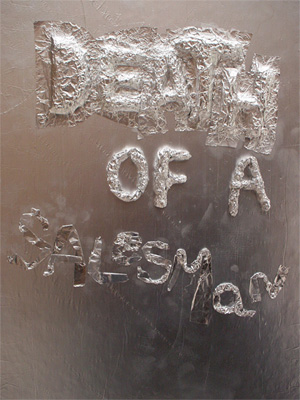
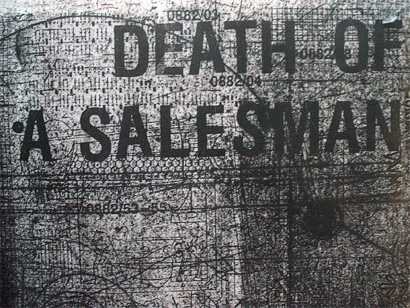
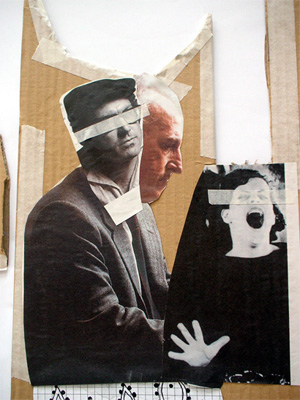
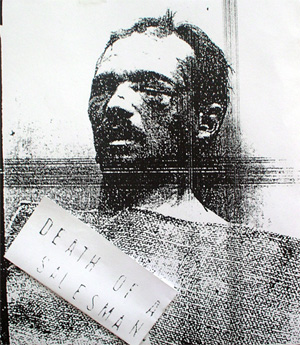
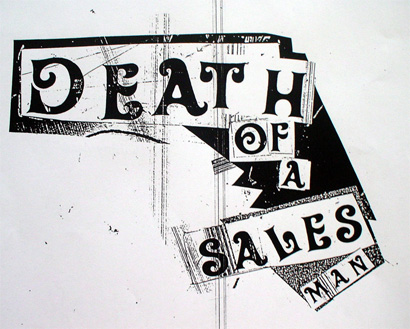

I enjoyed my final product and all the products of everyone that participated in this workshop. And to end it right… ART CHANTRY ROCKS!!
Cristina Bessa






The only design workshop I've ever attended was at AIGA Orlando's Re:solution event a few years back, it must have been 2003 or 2004.
We learned to make Japanese Box Kites from the only American who had been trained in a particular class of Japanese kite-makers.
Needless to say, it was so much fun. When the 10 or 12 of has had finished building our kites,
flew them in the neighboring field.
I wish I could remember his name.
On May.25.2007 at 12:34 PM